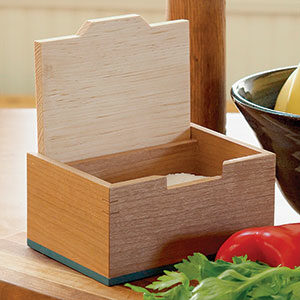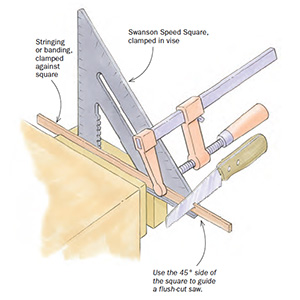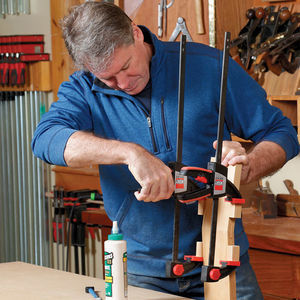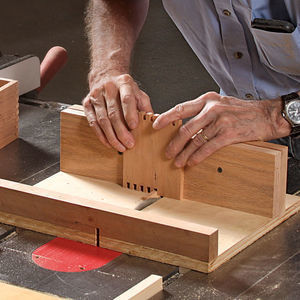Rock-Solid Miters with L-tenons
For Duncan Gowdy, the L-tenon miter joint allows for more straightforward assembly than typical splined miter jointsSolid-wood cases with mitered corners are at the heart of my furniture making. Most of my pieces involve carving, and in pursuit of good surfaces to carve, I build wall cabinets, freestanding case pieces, and small boxes, most of them mitered. And on all of those miters I use L-tenons made by finger-jointing two pieces of solid wood. Yes, I spend a fair amount of time making the tenons, but the resulting strength of the joint is well worth it. Using this technique, I’ve made L-tenons in sizes ranging from 3 in. across for large case pieces to barely 3⁄4 in. for small boxes. The L-tenon miter joint allows for more straightforward assembly than typical splined miter joints, which must be assembled on the diagonal, often causing a bit of juggling in the glue-up.
Read more about Duncan’s process for L-tenons here.
More from Duncan on FineWoodworking.com:
- Behind the Design – Furniture maker Duncan Gowdy walks you through his design process—from inspiration to sketching, scale mockups, full-size mockups, and finally the finished piece
- Man or Machine? – Learn Duncan Gowdy’s distinctive carving and finishing techniques
- Duncan Gowdy’s Illustrative Carving – Part furniture maker, part illustrator, Duncan Gowdy’s carvings are a signature that makes his work unique























Comments
Interesting approach... It would be interesting to compare the strength of this to using biscuits and slots...
Ely
Interesting approach... It would be useful to compare the strength of this to just using biscuits and slots...
Ely
Interesting but it seems to be a lot of work/overkill for a miter joint. There are several other joints that are plenty strong enough. I can accomplish a super strong miter with a lock miter bit.
Actually, I should think that there is more gluable surface with this system. The only end grain is with the mitered ends of the joint, which are inherently there. I too would be curious about a test of the relative strengths of this system against that of a lock miter. It would require a comparison of gluable area (long grain) in both methods. The variability (size of joint, tenons and stress of use) of the comparative areas would probably dictate which method would be more applicable. I would agree that assembly would definitely be facilitated with the "L" bracket approach.
I have successfully used my Domino DF 500 to reinforce miter joints. I understand that most woodworkers don't have a Festool Domino but I also used lock miter bits on my router table, a little more difficult set-up.
I know there are many ways to achieve the same result of adding mechanical strength to a miter joint without changing the appearance. I would have to use this method.
https://www.finewoodworking.com/2014/11/02/secret-dovetails
This joint has the same look, is stronger and you don't need to buy a Domino cutter to do it.
Additional benefit is that the case can be slid together in a traditional way much like a dovetailed box: ends and 2 sides are glued and then the 4th can be slid down directly. You cant glue it that way with biscuits or dominoes; the carcase/box needs to be assembled and squeezed in all at once. The above process can be done with baltic birch plywood too
Log in or create an account to post a comment.
Sign up Log in